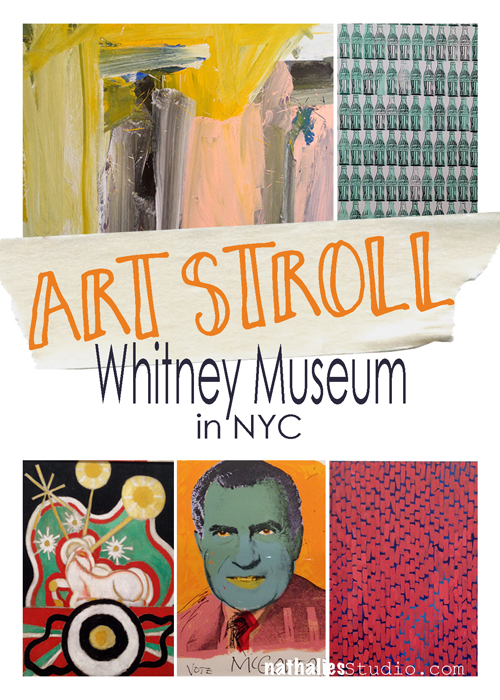
Finally, months after the Whitney Museum reopened, my friend Karen and I went to see the permanent collection and kind of breezed through the whole building to get an overview. The good thing is when you live so close you can do that as you can come back again :)
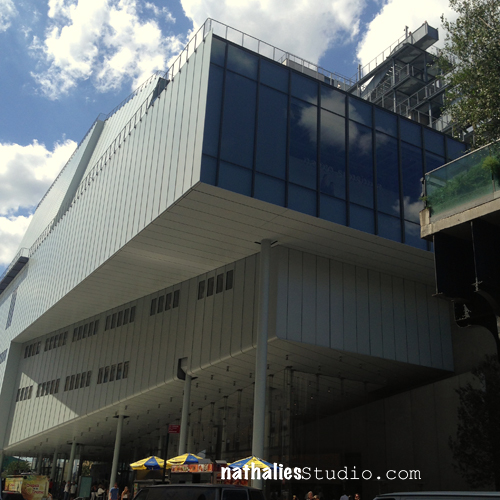
One of the things that I noticed right away was the framing of the artwork at Whitney.
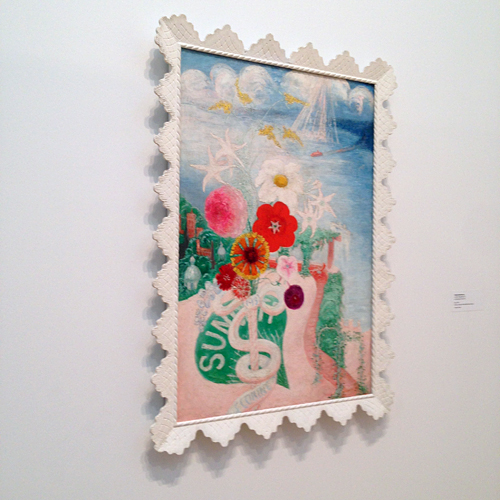
(Florine Stettheimer, Sun, 1931)
I have taken several classes with Corey d’Augustine at MoMA and as an art conservator one of the things that are very dear to Corey’s heart is the topic of the frames of artworks. He made me aware of the fact that museums in the past often times have just discarded or destroyed the frames that artist had made or picked. The reason was that museums wanted to fit the frames to the museum’s aesthetics or whatever was hip at the time of the exhibition. The frame above on the painting by Florine Stettheimer was designed by herself and she had it specially fabricated.

(Marsden Hartley, Forms Abstracted, 1913 – Frame painted by artist)
With lot’s of passion Corey would elaborate in his classes, why he thinks this was and is such a sin and while I kind of understood what he meant, I fully became appreciative of the frame “problem” when I went to the Whitney museum. It just dawned on me when I was looking at the first couple paintings in the collection. I was totally AWARE that the frames were not overpowering the artwork, they were part of the artwork or made the artwork WHOLE. And there I tipped my imaginative hat to Corey thinking “thanks man, – I got it!”
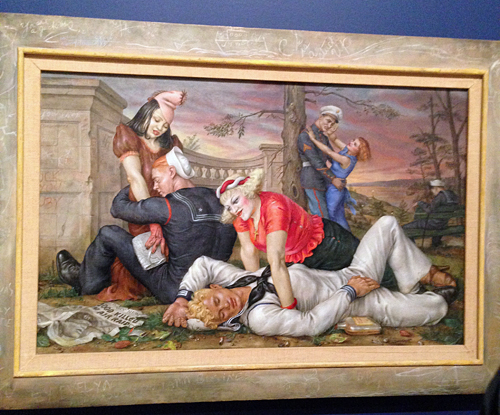
Paul Cadmus created the frame for his painting Sailors and Floosies (1938) and continued the graffiti depicted in the painting onto the frame. What a shame it would be if that frame would have gotten destroyed!

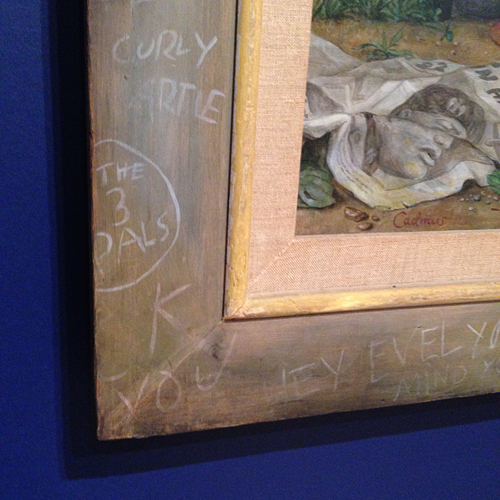
Apparently the Whitney Museum wasn’t happy with the wrong frames that some paintings lived in and they had a framer built 20 new frames for paintings that were ill-fitted in their frames. In the linked article, the framer talks about the detective work on how to find out how the frames have looked like back in the days. What an interesting work and topic.
Of course there was other work that highly inspired my at this visit at the Whitney Museum:
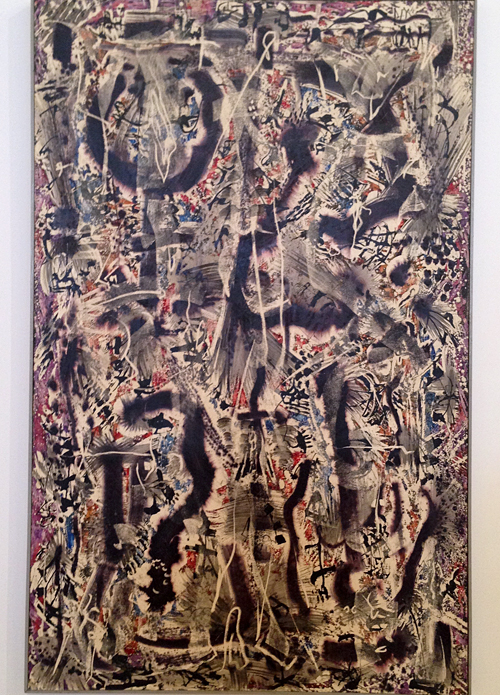
Alfonso Ossorio, Number 14 – 1953 . Ossorio developed a wax resist technique in the late 1940s to create layered abstract paintings. He would first draw using melted wax and then use water-pigments or ink on top which would be resisted by the waxed parts. He then scraped away pats of the hardened wax and repeat the process multiple time. While I have used different resist techniques- I never thought of repeating the process over and over …on my “play-list” now :)
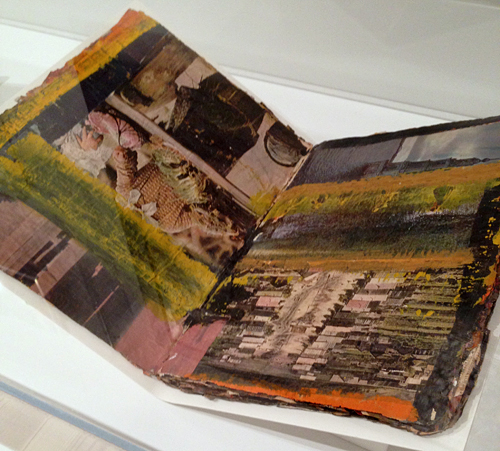
Al Held – Untitled – Oil, ink and printed paper collage on Life magazine . Can you tell why this intrigued me? I almost ran to the case and I might have elbowed my way through as it looked so much like an art journal to me. Love this!
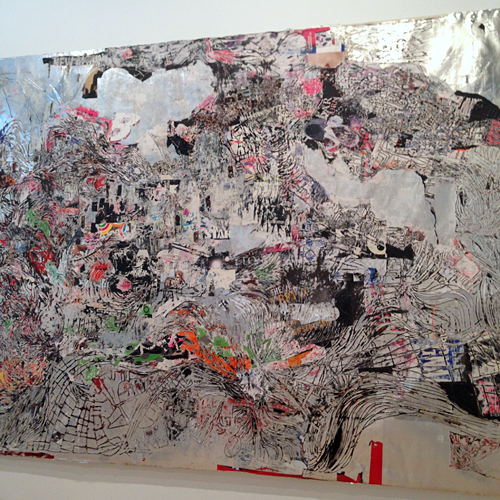
This is an gigantic piece by Mark Bradford – Bread and Circuses, 2007- Found paper, metal foil, acrylic, and string on canvas. It looks like a map – amazing. Bradford builds up a composition with layers of paper—often fragments of posters or ephemera salvaged from the street—that he soaks in water and combines with string, tape, and scraps of copy and magazine paper. He then sands down the collaged strata, and repeats the process in several layers.
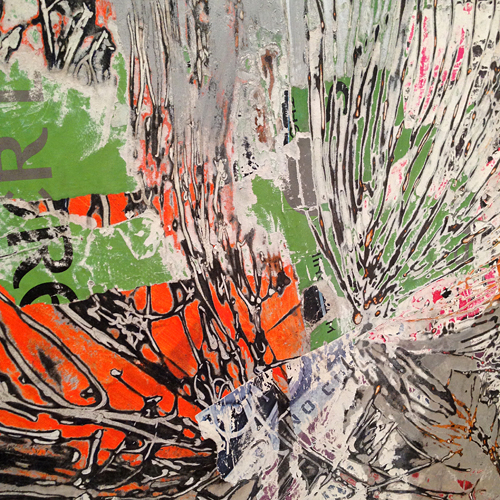
Of course there was way more inspiring art work – but this is for a different visit – there is only so much input you can handle when you visit a museum. I leave you with some wonderful views that are revealed when stepping onto each of the floors’ balconies of the Whitney Museum:
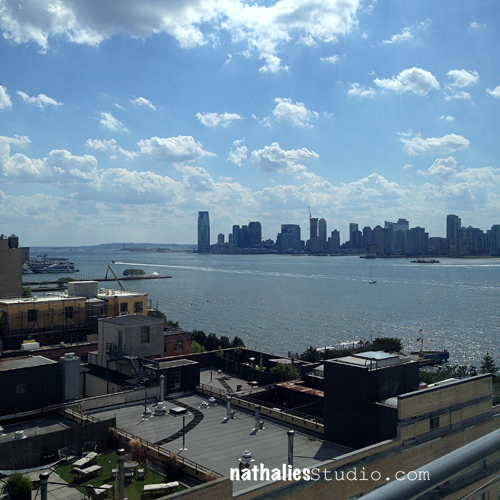
Waving over to Jersey City!
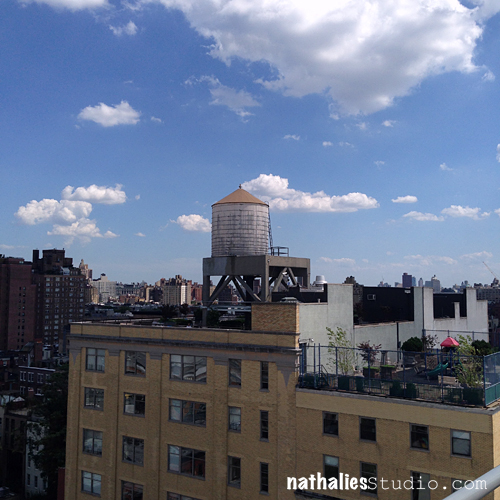
Watertower and roof gardens – <3

Around the Highline.
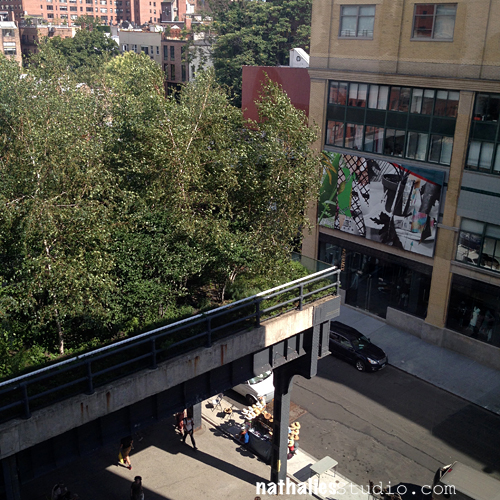
That was a fine visit – totally enjoyed the time there with Karen and cannot wait to come back many more times.
What do you think about the frames? Does this make you see frames in a new light?
Hope you enjoyed this art stroll too!

Comments (6)
Sue Clarke
| #
I see what you’re saying about the frames and it is especially evident on Sailors and Floosies! I must say that I’ve often thought that the ornate gold frames take away from the paintings that I’ve seen in political offices.
Reply
nathalie-kalbach
| #
I know- those super crazy ornate gold frames that have nothing to do with the painting itself either
Reply
Cindy L
| #
Thanks so much for sharing this Nathalie! I am definitely going to put The Whitney on my ‘To Do’ list the next time I’m in NYC. I had no idea about the history behind the frames but I find it fascinating and will always look at them in a different way in the future. As always, love the photos you share of the beautiful views too!
Reply
nathalie-kalbach
| #
Thank you Cindy, happy you enjoyed it!
Reply
Maura
| #
Totally get the frame thing through your observations. Thanks for sharing.
Reply
nathalie-kalbach
| #
Glad you liked it Maura!
Reply